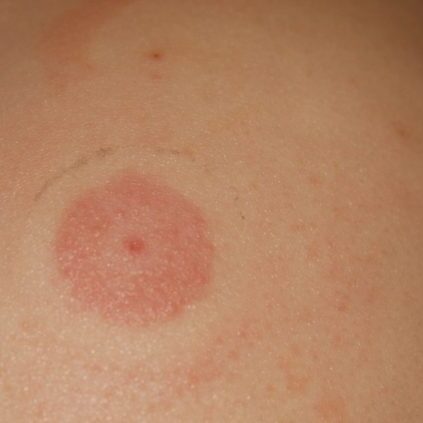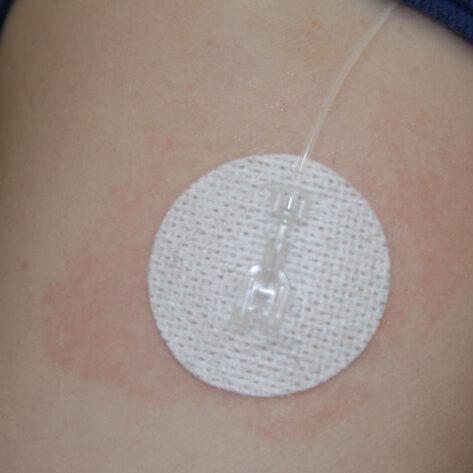Skin Prep Products to avoid skin irritation & keep sets/sensors stuck on
Diabetes technologies like insulin pumps and glucose monitoring systems are life-changers. But for some, the use of these devices comes with adverse reactions to their infusion sets and sensors. At best these reactions impact the functioning of the device; at worst, they create pain, exasperation and health risks, compounding the burden of daily diabetes care. If you fall in this category, there’s hope! Here we share some skin preparatory products which help reduce skin reactions and/or keep your diabetes technology stuck to you.
Skin Prep Wipes
The goal of a preparatory wipe, which you use right before inserting an infusion set or sensor, is to reduce irritation and/or keep the set on for the expected time period (2-3 days between pump infusion set changes; 6-7 days for CGM sensors; 14 days for Libre sensors). If you are finding that the sets are falling off too soon, or if your child’s skin is reacting negatively to the sensor or its adhesive, then skin preparatory wipes may be useful.
Note that if you also use a topical anesthetic cream, you should apply it – and remove it – before the use of any skin prep wipes.
How Irritating!
When the infusion set is removed, if you find that your child’s skin is red, inflamed, raised, “bubbly”, or blistered, it may be reacting to some component of the cannula or the adhesive.


In the case of sensitivity to the tape/adhesive, your child’s diabetes health care team may recommend the use of barrier wipes. Barrier wipes do just that: they provide a protective barrier between the infusion set and the skin, so that the troublesome components in the infusion set tape/adhesive don’t come in direct contact with your child’s skin. Examples of barrier film products available in Canada include: Cavilon™, Coloplast, SkinPrep™ and SkinTac™. With these products, you apply a liquid barrier film that dries quickly to form a breathable, transparent coating on the skin. They are designed to protect skin from (among other things) fluids, tape trauma, and friction.
Tips from the Trenches
When my son was three and started wearing an insulin pump, we tried all sorts of prep swabs, but found that most of them caused skin irritation for him. Since we didn’t generally have problems with irritation with the sets themselves, and since his sets seem to stay on fine, for the first few years we just used soap and water before a set change. This worked fine for us for quite a while. More recently, he seems to have developed a sensitivity: when we remove an infusion set we often find a red circle, exactly matching the shape and size of the infusion set tape. So we started using barrier wipes… with great success – his skin under the infusion set looks exactly the same as the surrounding skin, no irritation at all. -Michelle
SkinPrep™, Coloplast, and SkinTac™ all contain alcohol, and so act as both a cleanser and a protective barrier. That is, if you use these products before inserting an infusion set, you may be able to skip cleansing with an alcohol wipe. (Check with your child’s diabetes health care team for individual recommendations.)
On the other hand, Cavilon™ wipes provide a sting-free, alcohol-free barrier film. So they are a great alternative if your child finds that alcohol-containing products sting on contact, or if you find that alcohol wipes tend to dry out your child’s skin too much. Since Cavilon™ wipes don’t contain alcohol, they act simply as a barrier, without any cleansing properties. Therefore, it’s important to include a cleansing step before using Cavilon™ wipes. If economics are an important part of your decision, you may also be interested to know that Cavilon™ wipes do tend to be more expensive than other alcohol-based barrier wipes.
Note that barrier wipes are not likely to help if your child's body is reacting specifically to the cannula on a pump infusion set, since the cannula is inserted under the skin. In this case, you may need to explore infusion sets manufactured by a different company, using different components. Your child’s diabetes health care team may recommend alternative products. They may also be able to refer you to a dermatologist.
A Sticky Situation
In addition to providing a protective barrier film, some of the above products also increase adhesion, so the infusion set or sensor stays on better, for a longer period of time. To keep pump infusion sets and CGM or Flash sensors “stuck where you put ‘em,” for longer, you could try an adhesive barrier wipe, such as SkinPrep™, or SkinTac™. These products essentially provide a “sticky” layer between the patch and the skin; this increased adhesion keeps the infusion set on longer. If your child is involved in athletic activities which tend to create “sweaty situations”, or if he spends lots of time in the water, then you may find that skin preparatory wipes are a critical part of your child’s diabetes care routine.
Tips from the Trenches
Antiperspirant can also help keep infusion sets attached to the skin longer. Simply apply it to the site area, wash off the excess, then insert the infusion set as usual. This may help reduce sweat production in this area, allowing the infusion set to stay on longer.
-Michelle
Need a more intense approach?
The above information was reviewed for content accuracy by clinical staff of the Alberta Children’s Hospital Diabetes Clinic.
SHARE THIS ARTICLE